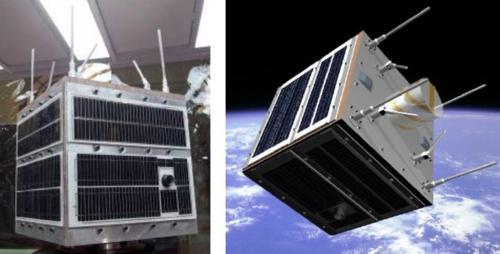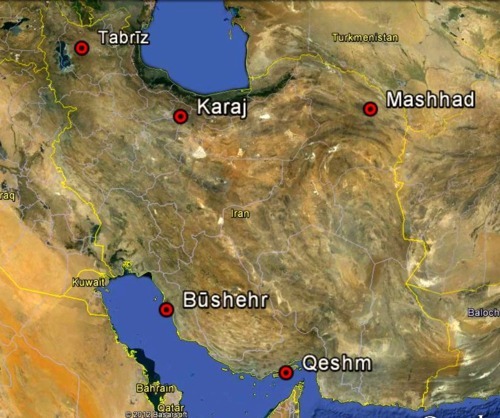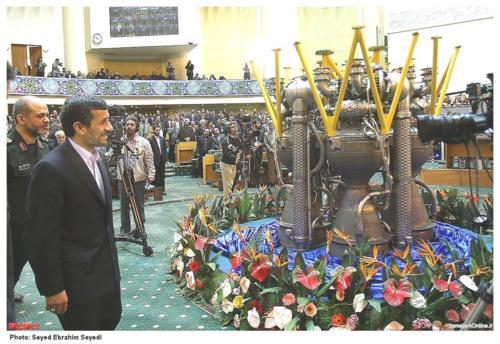
Iran successfully launched its third satellite into orbit on Friday, Feb. 3 at 3:34 am local time in Iran (7:04 pm Feb. 2 EST), 2 years and a day after placing its first satellite, Omid, into space.
The satellite was the 50 kg Navid which was reportedly built by students at the Sharif University of Technology. Iranian reports say this was the first satellite “completely designed and built by Iranian experts,” which raises questions about the design and manufacture of the two previous satellites.U.S. tracking shows Navid was in an initial orbit with a perigee of 275 km, an apogee of 374 km, and an inclination of 56.0 degrees. This is close to the intended orbit announced early last year (250 km x 375 km at 55 degrees), which suggests that Iran has fairly good control of the launch trajectory.
The satellite is expected to stay in orbit for several months. It is roughly cubical, about half a meter on a side. Reports say it will take panchromatic black and white images with a resolution of around 400 meters that it will transmit to Earth, and that it will collect data on weather conditions and monitor natural disasters.
This website shows the orbit and current location of Navid.
Officials said that the satellite is controlled by 5 ground stations spread around Iran, which are shown on the map below.

The Iranian Space Agency said the satellite was launched using the Safir 1-B rocket. The Safir is a 2-stage liquid-fueled launcher with a mass of about 26 tons. The first stage is essentially a Ghadr-1 missile, which uses a single Nodong engine. (The Ghadr-1 is a Shahab-3 missile with additional propellant and a lighter body.) The Safir second stage uses small engines similar to those of the Soviet SSN-6 missile.
Iranian press reports said the Safir 1-B is a modification of the launcher used for its previous satellites but with “20 percent more launch power.” However, this claim is doubtful since the orbits of Navid and Omid (246 km x 381 km x 55.7deg) require essentially the same speed to insert them into their orbits (7.79 km/s for Navid vs. 7.81 km/s for Omid), and the increase in payload mass from 27 kg (Omid) to 50 kg (Navid) is a tiny fraction of the overall launcher mass. The higher altitude for orbit insertion of Navid compared to Omid (275 km vs. 246 km) requires only a few percent increase in “launch power,” which could be accomplished, for example, by increasing the thrust slightly or reducing the body mass of the launcher.
Earlier reports suggested that the Navid would be launched on the Simorgh launcher that Iran is developing, but this launcher has not been flight tested. It would be a much larger rocket than Safir, similar to a two-stage version of North Korea’s Unha-2 launcher, with a mass of roughly 80 tons. That launcher would use a cluster of 4 Nodong engines for the first stage; in 2010, Iran displayed what appears to be this cluster of engines.

Current speculation is that Iran is planning to launch the Toulou and Zafar satellites next, but these are intended to go in higher orbits and will need to wait for a more powerful launcher than Safir.
The Fajr satellite, which announcements last year said would be launched in October 2011, has so far not been launched, for unknown reasons.
